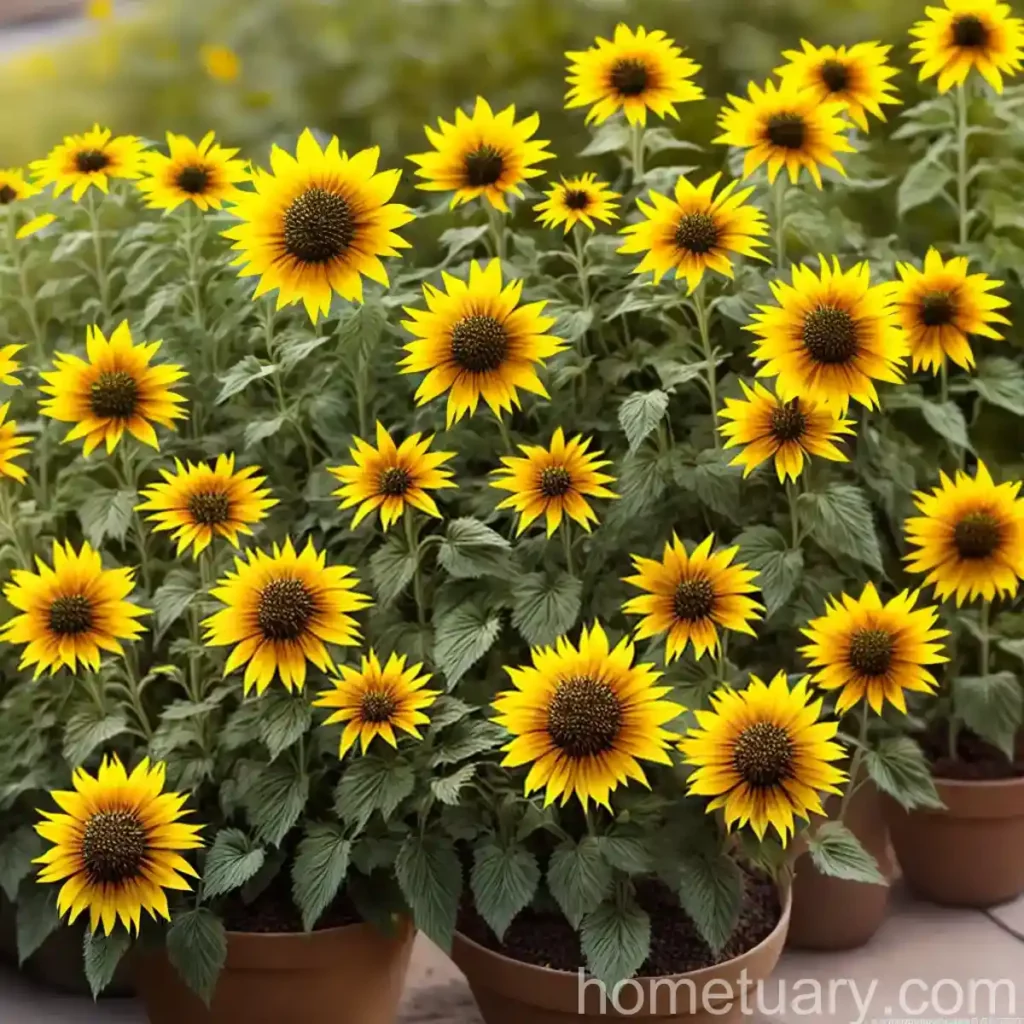Plant Profile: Oxeye Sunflower (Heliopsis helianthoides ‘Inhelsodor’ TUSCAN GOLD)
Introduction
The oxeye sunflower (Heliopsis helianthoides ‘Inhelsodor’ TUSCAN GOLD) is a delightful perennial plant that belongs to the aster family, Asteraceae. It is known for its bright and vibrant flowers that resemble those of the sunflower, hence the name. This article will delve into the characteristics, cultivation, and maintenance of this beautiful plant, providing valuable insights for both novice and experienced gardeners.
Key Takeaways
Oxeye Sunflower (Heliopsis helianthoides ‘Inhelsodor’ TUSCAN GOLD)
- Plant Name: Heliopsis helianthoides ‘Inhelsodor’ TUSCAN GOLD
- Common Names: Tuscan Gold sunflower, Inhelsodor oxeye sunflower
- Description: A perennial plant with bright, sunflower-like flowers
- Characteristics: Vibrant blooms, easy to grow, attractive to pollinators
- Growth Requirements: Full sunlight, well-drained soil, regular watering and fertilization
- Uses: Gardening, landscaping, floral arrangements, pollinator attractor
- Maintenance: Moderate care requirements, minimal pruning, resistant to diseases and pests
- Cultivation: Suitable for both outdoor and container planting
With these key takeaways in mind, let’s explore the specific aspects of culture, uses, maintenance, and more for the oxeye sunflower.
Plant Culture
Water
Maintaining adequate moisture levels in the soil is crucial for the healthy growth of the oxeye sunflower. While it is essential to provide consistent watering, it’s equally important to ensure proper drainage to prevent waterlogging, which can lead to root rot and other issues.
Sunlight
Like many sun-loving plants, the oxeye sunflower thrives in full sunlight. It should be planted in an area that receives at least 6 to 8 hours of direct sunlight per day to support optimal growth and flowering.
Fertilizer
Applying a balanced, all-purpose fertilizer in the spring can help promote vigorous growth and abundant flowering. Following the manufacturer’s recommendations for application rates and frequency is advisable to prevent over-fertilization.
Soil
Well-drained soil with a slightly acidic to neutral pH range (6.0-7.0) is ideal for the oxeye sunflower. Loamy or sandy soils enriched with organic matter provide the right foundation for healthy root development and overall plant vitality.
Pruning
While the oxeye sunflower does not require extensive pruning, removing spent flowers can prolong the blooming period and improve the plant’s overall appearance. Additionally, cutting back the stems in late fall after flowering has ceased can help prepare the plant for the winter months.
Propagation
Division
Dividing mature clumps of oxeye sunflowers in early spring is an effective way to propagate new plants. Carefully separating the root systems and replanting the divisions in suitable locations can rejuvenate the parent plant and create additional specimens for the garden.
Seed Propagation
Harvesting and sowing the seeds of the oxeye sunflower in the fall can yield new plants in the following growing season. Sowing the seeds in well-prepared soil and ensuring consistent moisture levels can support successful germination and establishment.
Container Popularity
Given its manageable size and attractive blooms, the oxeye sunflower is well-suited for container gardening. Its adaptability to container growth makes it an excellent choice for small gardens, balconies, and patios, adding a bright and cheerful touch to these spaces.
Common Diseases
The oxeye sunflower is generally resilient against major diseases; however, certain environmental conditions or cultural practices can make it susceptible to issues such as powdery mildew and leaf spot. Proper sanitation, adequate spacing, and reducing moisture on foliage can help prevent these common diseases.
Disease Diagnosis
When observing the oxeye sunflower for signs of disease, keep an eye out for symptoms such as powdery white patches on leaves, yellowing or browning of foliage, or the presence of dark spots. Timely intervention with appropriate fungicides or cultural adjustments can mitigate these concerns.
Common Pests
While the oxeye sunflower is relatively resistant to pests, it can occasionally encounter challenges from aphids, snails, and slugs. Monitoring the plant regularly and applying natural pest control methods can effectively manage these issues without resorting to chemical treatments.
Botanist’s Tips
1. Companion Planting
Pairing the oxeye sunflower with other pollinator-friendly plants like coneflowers, bee balm, and salvia can create a vibrant and ecologically beneficial garden space. The collective attractiveness of these plants can encourage the presence of beneficial insects and support a thriving ecosystem.
2. Pollinator Attractor
As a valuable source of nectar and pollen, the oxeye sunflower serves as a magnet for bees, butterflies, and other pollinators. By incorporating this plant into various garden designs, individuals can contribute to the conservation of pollinators and enhance the biodiversity of their local environment.
Fun Facts
- The oxeye sunflower is native to North America, where it graces meadows, prairies, and open woodlands with its bright blooms.
- This plant is a herbaceous perennial, meaning it regrows from its crown each spring and persists for multiple growing seasons.
- The Heliopsis genus, to which the oxeye sunflower belongs, is named for its resemblance to the true sunflower genus, Helianthus.
With its striking appearance and relatively low maintenance requirements, the oxeye sunflower is a delightful addition to gardens, landscapes, and floral arrangements. Understanding its optimal cultivation and care can enable gardeners to fully appreciate and enjoy the beauty and benefits that this plant offers.
Links to External Resources
- The American Society of Plant Biologists
- Royal Horticultural Society
- University of Florida Gardening Solutions
- Missouri Botanical Garden
- The Plant List
In conclusion, the oxeye sunflower, scientifically known as Heliopsis helianthoides ‘Inhelsodor’ TUSCAN GOLD, is a captivating plant that offers both aesthetic and ecological value. Its vibrant blooms, adaptability to different growing conditions, and contribution to pollinator habitats make it a standout choice for gardens and landscapes. By following the recommended cultural practices and leveraging its unique attributes, individuals can cultivate and appreciate the beauty of this sunflower-like perennial.
Keywords: Heliopsis helianthoides, Tuscan Gold sunflower, Inhelsodor oxeye sunflower, Heliopsis helianthoides ‘Inhelsodor’ TUSCAN GOLD, TUSCAN GOLD oxeye sunflower variety, Inhelsodor oxeye sunflower variety, Heliopsis helianthoides ‘Inhelsodor’ TUSCAN GOLD care tips, Tuscan Gold sunflower blooming time, Inhelsodor oxeye sunflower lifespan, Heliopsis helianthoides Inhelsodor growth habits, TUSCAN GOLD oxeye sunflower pruning tips















